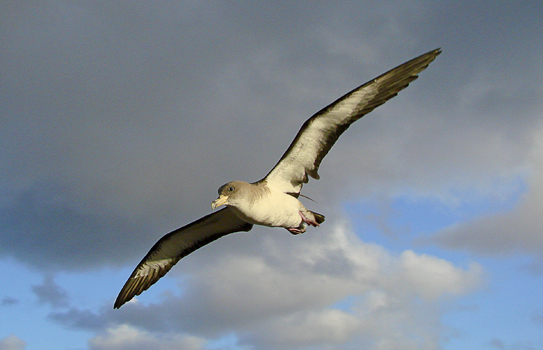The apparent scarcity or absence of blood parasites in some avian groups, such as seabirds, has been related to intrinsic and extrinsic factors including host immunological capacity, host-parasite assemblage, and ecological parameters, but also to reduced sensitivity of some methods to detect low parasite prevalence/intensities of infection. Here, the haemosporidian parasite prevalence was examined in a breeding population of a long-distance migrant seabird, nesting in the Macaronesian region, in the Eastern Atlantic. Previous studies on Calonectris diomedea complex were based on small sample sizes providing weak evidence for a lack of infections by haemoparasites. Here, the presence of both parasite infections in C. d. borealis and larvae of potential mosquito vectors on the area was investigated. A PCR-based assay extensively examined the prevalence of blood parasites belonging to the genera Plasmodium, Haemoproteus, and Leucocytozoon in 286 individuals from different life stages, facing their specific energetic trade-offs (immunological functions vs. life history activities). None of the sampled individuals were infected by these parasites, supporting the hypothesis that there was no in situ or ex situ transmission of vector-borne parasites in marine habitats irrespective of host's life stage and in spite of the presence of the potential Plasmodium vector breeding in the area. These results suggest that the lack of transmission of haemosporidian parasites on Selvagem Grande may be related to the lack of suitable dipteran vectors at the study sites, which may result from the geographic isolation of this area. informacion[at]ebd.csic.es: Campioni et al (2017) Absence of haemosporidian parasite infections in the long-lived Cory's shearwater: evidence from molecular analyses and review of the literatura. Parasitol Res https://doi.org/10.1007/s00436-017-5676-7
https://link.springer.com/article/10.1007%2Fs00436-017-5676-7

 Las altas temperaturas están provocando que las lagunas y las marismas de Doñana pierdan agua rápidamente
Las altas temperaturas están provocando que las lagunas y las marismas de Doñana pierdan agua rápidamente




